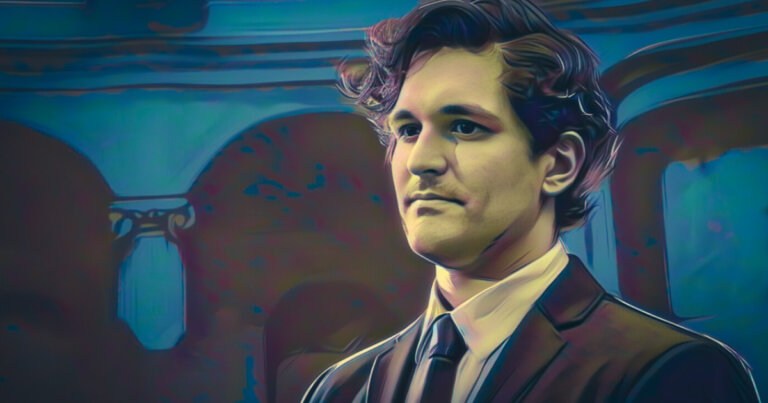 Sam Bankman-Fried takes the stand with jury present in second day of testimony
Sam Bankman-Fried takes the stand with jury present in second day of testimony Sam Bankman-Fried takes the stand with jury present in second day of testimony
The FTX founder first testified on Oct. 26, but not in the presence of the jury.

Cover art/illustration via CryptoSlate. Image includes combined content which may include AI-generated content.
Sam Bankman-Fried, the co-founder and former CEO of FTX, continued to provide testimony in his criminal case on Oct. 27, in which he described how FTX and its sister firm, Alameda Research, began as small but ambitious operations that eventually collapsed.
Bankman-Fried testified that he launched Alameda because of the growing popularity of cryptocurrency even though he knew “basically nothing” about it, saying:
“Crypto was getting public. In 2017, I’d seen two people talking excitedly and it was probably about crypto … crypto seemed like a place with a big demand for an arbitrage provider.”
He told the court that Alameda operated out of a small Airbnb in North Berkeley, California, in order to keep a low profile. When asked to explain the firm’s name, he said that he wanted to “stay under the radar” and “didn’t want to call it Sam’s crypto trading firm.”
Jury returns to hear testimony
Up to this point, Bankman-Fried had been made to give his testimony in the absence of the jury at the request of government prosecutors.
As jurors returned to hear the remainder of his testimony, Bankman-Fried stated that Alameda Research continued to serve as a market maker for FTX as the latter firm went live. He explained that risk could spill between companies, stating:
“We increased the number of servers for the risk engine. But we learned that if there was an erroneous liquidation of Alameda, or any other large account … it would be catastrophic for FTX.”
Bankman-Fried said that he eventually told FTX co-founder Gary Wang to take measures to stop possible liquidations of that type. He said that he now knows that those measures consisted of allowing account balances to go negative, as described in Wang’s testimony.
Bankman-Fried added that Alameda’s line of credit “grew over time to billions” of dollars. He testified that he had discussed Alameda with Wang and FTX’s former director of engineering, Nishad Singh, and said that they decided to increase the line of credit.
He once again downplayed his awareness of the full financial situation, stating:
“At the time I wasn’t entirely sure what was [happening]. I thought the funds were being held in a bank account or sent to FTX in stablecoins. If Alameda was keeping it, I figured it would be reflected as a negative number on FTX.”
Bankman-Fried briefly touched on a number of other operational matters, including his use of the Signal messaging app, FTX’s terms of service, and FTX’s FTT token.
FTX goes to the Bahamas
Earlier in his testimony, Bankman-Fried said that FTX and Alameda had moved to Hong Kong for the region’s “better regulatory environment.” However, both companies soon left due to COVID-19 quarantines and domestic disputes with China.
Bankman-Fried said that FTX instead moved to the Bahamas, which had “suitable” regulations. The firm’s employees moved into an apartment for ten, he said.
He also described his break-up with former Alameda Research CEO Caroline Ellison, stating that “she wanted more than I could give … it wasn’t the first time with me.” Ellison described a significantly more strained relationship in her own testimony, stating that Bankman-Fried had blamed and yelled at her for the company’s issues.
SBF describes company spending
Bankman-Fried described his marketing activities, including the purchase of Miami-Dade Arena and investments in emerging projects such as Solana. He further detailed his investments in the VC firm K5 for its “promising incubations” and “celebrity contacts.”
He also described his decision to invest in political candidates and groups, stating:
“I was interested in pandemic prevention. So I thought policy was important, [as well as] Congress and the Executive Branch. Some [donations] were by FTX for cryptocurrency lobbying … some, not most … [for] a U.S. regulatory structure.”
Bankman-Fried admitted that those donations came from loans from Alameda Research. He said that FTX executives Nishad Singh and Ryan Salame made donations as well. In his own testimony, Singh said that his name was merely associated with some donations but nevertheless pleaded guilty to campaign financing charges in his plea deal.
Bankman-Fried was still on the witness stand at the time of writing. His defense’s ultimate argument is still unclear. CryptoSlate’s coverage of the case will continue.






























































